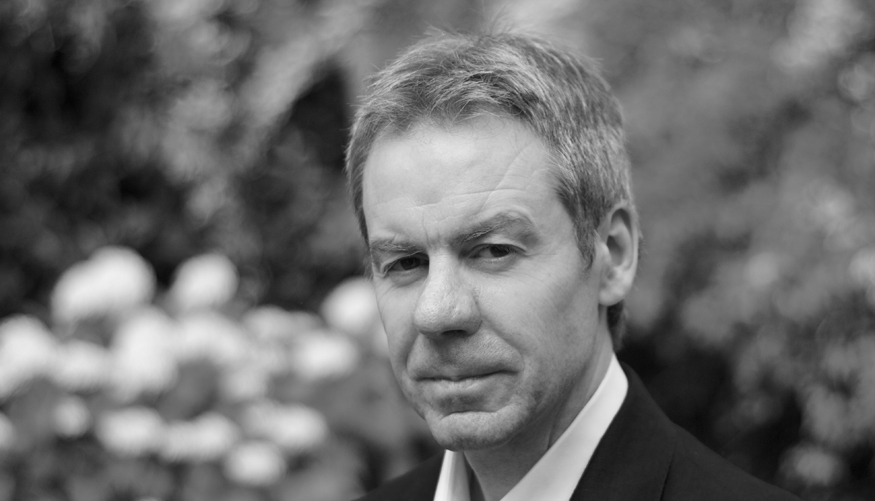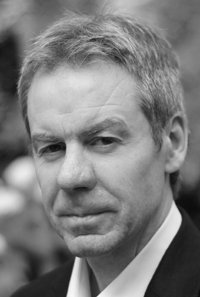
Andrew Martin has written nine Jim Stringer novels, which are set in the early 20th century and all feature the railways. His book Somme Stations won the CWA Ellis Peters Historical Dagger a few years back, and fans await each new release. However, Andrew’s latest book barely features railways at all. The super-rich don’t need to ride in trains when they’ve got Lambourghinis, and The Yellow Diamond is all about Mayfair’s most privileged residents and the crimes some of them commit. It’s a big change of track for the writer, and so we asked him to tell us more about his new book and its main character, DI Blake Reynolds…
First off, can you tell me a bit about your background and how you ended up writing crime fiction?
I was born and brought up in York, which is the focus of the Jim Stringer historical novels. I used to go and watch murder trials at York Crown Court. I think that’s what made me go into law – I qualified as a barrister. I found law, and court procedure, hypnotically fascinating, but I was never content with the actual facts. I wanted freedom to embellish them, and that was equally true when I abandoned law and became a journalist. I’ve just been watching a Sherlock Holmes film, The Seven Percent Solution, and it has a great opening inscription: ‘Nothing has been made up except the facts.’
What do you hope crime fiction lovers will love about your new book, The Yellow Diamond?
It’s about a unit of the Metropolitan Police set up to keep tabs on the super-rich. It’s based in Mayfair, but at the wrong end – in Down Street, which has always interested me, partly because of the closed down Tube station. People in Mayfair were too rich to need the Tube.
There’s a lot of atmosphere in the book: wintry Mayfair in the run-up to Christmas, also the French Riviera in winter and the North York Moors. I hope readers will find the main police characters, Blake Reynolds and Victoria Clifford, to be amusing and interestingly flawed companions. I hope the Russian oligarchs will ring true, but not in a clichéd way, and I hope even the minor characters will be memorable – a corrupt jeweller, a stage magician, a woman who gives guided tours of a country house. It’s meant to be like a painterly, escapist dream.
The Jim Stringer novels have a strong following, so why the change of track?
I count those novels a success, but ‘strong following’ is not quite the same as international bestseller. Also, I wanted to prove to myself that I could do something different and write about rich London in the modern day instead of relatively poor northerners in 1910. I don’t think novelists are obliged to be socially relevant, but I thought I’d have a go. And I had a hankering to depict the sort of glamour-gone-wrong that I find in my favourite crime writer, Raymond Chandler.
What are your thoughts about the growing gap between the richest and poorest in British society and is it something you address in the novel?
I’m against it. Awareness of inequality in your society is very debilitating. It saps your confidence. I do try to address it in the novel, especially through the eyes of the detective Blake Reynolds. For example, he is appalled by the way the super-rich leave their Lamborghinis lying around, unlocked on double yellow lines. But he is also a bit seduced by it, and that’s my own position. I’m not Jeremy Corbyn. I don’t have to be too preachy about it.
Tell us more about DI Blake Reynolds? Is he based on anybody? Who or what has inspired this character?
He’s like me: northern, a bit dreamy, melancholic, dogged, with flashes of inspiration. But he’s having a midlife crisis and I don’t think I am. He’s also a bit like Jim Stringer. And his ‘secretary’, Victoria Clifford – who is just as important a character – is a bit like Jim’s wife, Lydia. Just as Lydia is apparently more forceful than Jim, so Victoria is more forceful than Blake.
These days so many crime novels are set in gritty locations, what was it like writing about an upmarket place like Mayfair? It’s a setting more commonly used in Golden Age novels than contemporary thrillers.
The sad fact of the matter – for those of us who can’t afford to live there – is that Mayfair is the most beautiful part of London: Georgian houses; dark, old pubs with real fires and candlelight; Mount Street Gardens, guarded by two red telephone boxes, like two sentries. I sit there under the plane trees, perhaps smoking a cigar. Mayfair attracts me partly because it’s old-fashioned. You can describe it in a way you’d describe a place in a period novel. I wouldn’t know how to write a scene set in a McDonalds. What do you say? ‘It was a McDonalds. It looked like all the others.’ Well, there are no McDonalds in Mayfair.
Will we see more of Blake Reynolds?
I hope so, if the book does well. There’d be more of Victoria Clifford, as well. The super-rich unit would return, expanded, and with a strange Chinese computer genius just down from Cambridge. It would gradually become a multi-cultural globe-trotting force policing the super-rich, but still with the base in Down Street.
And what about Jim Stringer, is he going to return?
There’s a possibility that the books will become a TV series. If that happens, we’ll be hearing more from Jim, and possibly even if not. I think of new Stringer stories on a regular basis, but his future is really out of my hands.
The Yellow Diamond by Andrew Martin comes out 5 November. Watch for our review. We also reviewed The Baghdad Railway Club here.
